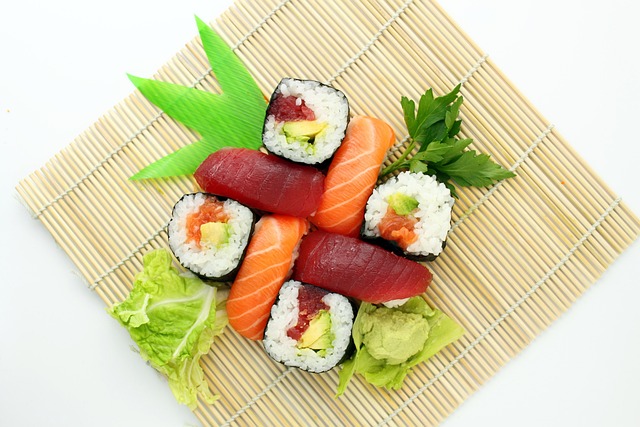A ubiquitous component in many Asian cuisines, seaweed is an abundant marine algae that is prized for both its distinct flavour and nutritional value. Knowing what gluten is in food is crucial, especially for those who have gluten intolerances and are becoming more conscious of their nutritional requirements. A class of proteins called gluten is present in cereals like rye, barley, and wheat. For those who have gluten sensitivity or celiac disease, it creates health issues. One may wonder if seaweed—a kind of marine vegetable—contains gluten.
This post will answer the question “Does seaweed have gluten?” We’ll also be discussing about the Nori seaweed.
Most people agree that seaweed is gluten-free. It does not contain wheat, barley, rye, or crossbred hybrids of these grains, which are the grains that normally contain gluten. Instead, it grows naturally in the water. However, when seaweed is processed, packaged, or included as an ingredient in gluten-containing products, its gluten-free status may be jeopardised. As a result, it’s imperative that customers who are avoiding gluten look for any additions or cross-contamination that can cause seaweed products to contain gluten.

Does Seaweed Have Gluten?
The answer is no.
A healthy dietary choice for people on a gluten-free diet is seaweed. Gluten is a protein compound present in wheat, barley, rye, and triticale that is naturally absent from it. Minerals, vitamins, and antioxidants found in seaweed promote general health. Seaweeds such as wakame, kelp, and nori can be added to dishes to improve their nutritional content and flavour for gluten-free diets.
- Seaweed’s Nutrients: vitamins A, C, and E, minerals (iodine, calcium), and antioxidants
- Gluten-Related Conditions: non-celiac gluten sensitivity, and celiac illness
What is Nori Seaweed?
Porphyra, the scientific name for nori seaweed, is a kind of red algae that is commonly seen growing in intertidal zones along the coasts of China, Korea, and Japan. For millennia, Asian cuisine has utilised it for harvesting purposes. The seaweed known as nori is slender, fragile, and has a distinct dark green or purple hue. The most well-known application for it is in sushi rolls.
The seaweed known as nori has been an essential part of Japanese cooking for more than a millennium. The cultivation and processing of nori has been refined by the Japanese, guaranteeing its high quality and flavour. Since it was first used to wrap fermented fish and rice in the 17th century, nori has been a staple in sushi culture.
As sushi changed throughout time, nori became a necessary component for making the famous sushi rolls that are known to us now.
Seaweed known as nori is not only delicious to eat, but it has cultural significance in Japan. It is frequently connected to festivities and noteworthy events, signifying luck and wealth. Apart from its cultural significance, nori seaweed is well known around the world for having an outstanding nutritional profile.
Common Uses of Nori Seaweed in Cuisine
Sushi rolls are a popular application for nori seaweed, which is wrapped around rice and a variety of fillings. It gives the food a crunchy texture and a nice umami flavour. Sushi lovers love the delicate balance of flavours and textures created by the marriage of nori seaweed, rice, and fresh toppings.
In addition to sushi, nori seaweed is used in many other culinary preparations.
It’s used to manufacture seaweed snacks, which are becoming more and more well-liked because they’re high in nutrients and low in calories. These treats, which have a delightful crunch and an explosion of umami flavour, are typically in the shape of crispy sheets or chips.
Nori seaweed can also be crumbled and added to salads, soups, and stir-fries as a garnish or flavour. Its distinct flavour and texture may provide a sense of ocean and umami to even the most basic dishes. Nori powder, which can be used to improve the flavour of a variety of meals, can also be made from nori seaweed.
Beyond its application in food, nori seaweed is becoming a common ingredient in beauty products. Nori seaweed is thought to provide moisturising and anti-aging benefits for skin because of its high mineral content and antioxidant qualities. It is frequently used to support a healthy complexion in face masks, serums, and creams.

Gluten Amount in Nori Seaweed
After examining gluten and nori seaweed independently, let’s examine the seaweed’s gluten content. Is it safe for people who are gluten intolerant to eat nori seaweed? Let’s investigate.
Processing and Preparation of Nori Seaweed
The nori seaweed goes through a number of processes in the production process to guarantee its quality and flavour. First, only the best and freshest specimens of seaweed are chosen after it is meticulously collected from the water. Following collecting, the seaweed is carefully cleaned to get rid of any contaminants or debris that might have accumulated.
The nori seaweed is carefully shredded into thin strips after washing. This shredding procedure is essential to giving nori seaweed its distinctive texture and suitability for a wide range of culinary applications. After that, the seaweed is finely dried to maintain its nutritional value and bring out its flavour, using a combination of natural sunshine and regulated temperature settings.
These steps are essential for transforming the seaweed into the thin, crisp sheets frequently used in foods such as sushi rolls. Nevertheless, no gluten-containing substances are added throughout these production stages. Consequently, nori seaweed is usually regarded as gluten-free.
Check out this post of Nori wraps recipe.
Essential Components in Seaweed Salad
The seaweeds themselves are the main component of seaweed salad. Not only are these amazing sea plants tasty, but they are also a great source of vital minerals. Due to their well-known high vitamin, mineral, and dietary fibre content, seaweeds are a beneficial addition to any diet. They are a fantastic source of iodine, which is necessary to keep the thyroid functioning normally. As one of the greatest natural iodine sources, seaweeds are a great option for anyone trying to increase their iodine consumption.
Seaweeds are also a great source of antioxidants, which are vital for shielding the body from oxidative stress. By scavenging dangerous free radicals, these antioxidants lower the chance of developing chronic illnesses. Furthermore, seaweeds are a great source of vitamins A, C, and E, which are vital for immune system support, skin health, and general wellbeing. They also include a variety of minerals, such as iron, calcium, and magnesium, which are essential for certain body processes.
Sesame seeds are another interesting ingredient in seaweed salad. These small seeds give the meal a nutty flavour in addition to a lovely crunch. Healthy lipids, protein, and dietary fibre abound in sesame seeds. They are also a great source of calcium, iron, and zinc, among other vitamins and minerals. Sesame seeds and seaweeds combine to give the salad a delicious texture and an additional layer of nutritious value.

Examining the Gluten Content in Seaweed Salad
Having gained a better grasp of gluten and the ingredients in seaweed salad, let’s investigate whether or not seaweed salad is gluten-free.
Potential Gluten-Containing Ingredients in Seaweed Salad
While seaweed does not naturally contain gluten, some recipes for seaweed salad or commercial seaweed salad items may have additional components that do. For instance, wheat is occasionally used to make soy sauce, one of the main ingredients in seaweed salad dressing. To make sure the soy sauce used is gluten-free, it’s crucial to look up the ingredient list or get in touch with the producer.
Gluten-Free Seaweed Salad Recipes
Seaweed salad is available in gluten-free versions from many restaurants and food producers in order to accommodate people who have celiac disease or gluten sensitivity. Regular soy sauce is swapped out for tamari or gluten-free soy sauce in these versions.
How to Ensure Your Seaweed Salad is Gluten-Free
There are several ways to make sure your seaweed salad is gluten-free, whether you like to make it at home or want to confirm that a store-bought version is free of gluten.
Checking Labels for Gluten Content
Make sure to carefully read the labels when buying packaged seaweed salad or any ingredients for making your own seaweed salad. Seek for products that have been certified as gluten-free or that expressly indicate they are. Furthermore, carefully review the ingredient list to look for any potential gluten sources, such as soy sauce made from wheat or other dubious additions.
Making Homemade Gluten-Free Seaweed Salad
A terrific option if you’re more of a hands-on learner is to make your own gluten-free seaweed salad. Begin by choosing seaweed that is free of gluten and ensure that all other components, such as vinegar, soy sauce, and other condiments, are likewise free of gluten. You may have a worry-free gluten-free supper and maintain complete control over the ingredients when you make the salad at home.

Conclusion
In conclusion, nori seaweed is a good option for anyone following a gluten-free diet because it is widely regarded as being gluten-free. Cross-contamination can happen, thus people with celiac disease or extremely sensitive gluten should choose nori seaweed items that are clearly labelled as gluten-free. In addition, a range of Asian ingredients and gluten-free seaweed substitutes are available to accommodate a variety of dietary requirements and cooking styles. People can successfully maintain a gluten-free lifestyle and yet enjoy the flavours and health advantages of nori seaweed and other gluten-free foods by putting these strategies and tips into practice.
Check out other posts:
Does Mustard Seed Contain Gluten?- Benefits and Popular Brands of Gluten-free Mustard







